Shopify : Top E-commerce Solution with Built-in Marketing Tools

Shopify: in summary
Shopify helps you create, manage, and grow your online store effortlessly. Suitable for businesses of all sizes, it offers customisable themes, seamless payment integrations, and extensive app support to enhance your e-commerce experience.
What are the main features of Shopify?
Customisable Online Store
Shopify enables you to build a unique online store tailored to your brand. The platform offers extensive customisation options backed by a range of professionally designed themes.
- Theme Library: Access a broad selection of free and paid themes.
- Drag-and-Drop Builder: Easily adjust your store layout without coding skills.
- Mobile Responsiveness: Ensure your storefront looks excellent on all devices.
Integrated Payment Solutions
Seamlessly handle all types of transactions with Shopify's integrated payment systems. This feature removes the complexities involved in external payment gateways.
- Multiple Payment Methods: Accept credit cards, PayPal, and more.
- Automatic Tax Calculations: Calculate taxes based on customer location.
- Secure Checkout: Provides a PCI compliant checkout experience for your buyers.
Comprehensive Inventory Management
Maintain and monitor inventory efficiently through Shopify's user-friendly management tools. This feature makes tracking stock and updating product listings straightforward.
- Real-Time Inventory Tracking: Monitor stock levels in real-time.
- Automated Stock Updates: Streamline your inventory management with automated updates.
- Bulk Products Import/Export: Manage large inventories using bulk import/export functions.
Advanced Marketing Tools
Drive traffic and sales to your store with Shopify's built-in marketing capabilities. The system offers an arsenal of tools for effective e-commerce marketing campaigns.
- Search Engine Optimization (SEO): Enhance the visibility of your store across search engines.
- Social Media Integration: Market your products directly on social media platforms.
- Email Marketing: Create and run effective email campaigns within Shopify.
Extensive App Marketplace
Expand the functionality of your online store through Shopify's extensive app marketplace. These apps cover a wide range of solutions from accounting to customer support.
- Custom Apps: Develop custom apps tailored to your needs.
- Third-Party Integrations: Bridge to popular external systems like ERP and CRM platforms.
- Shopify Apps: Choose from thousands of apps designed to enhance every aspect of your e-commerce operations.
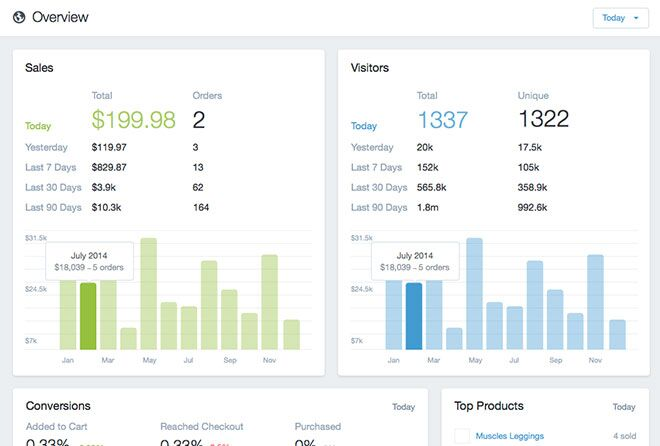 Shopify - Shopify Scoreboard
Shopify - Shopify Scoreboard 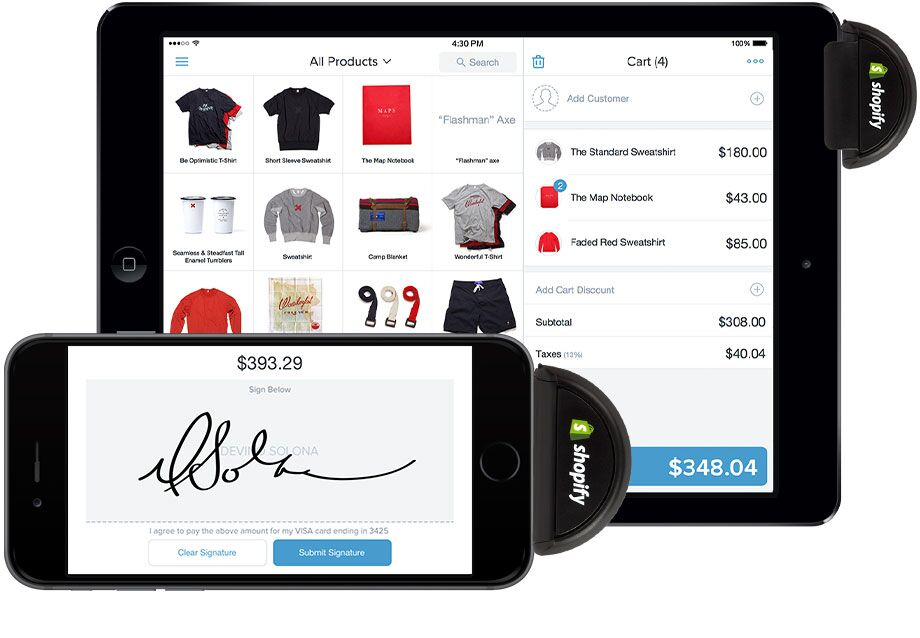 Shopify - Shopify: online shop
Shopify - Shopify: online shop 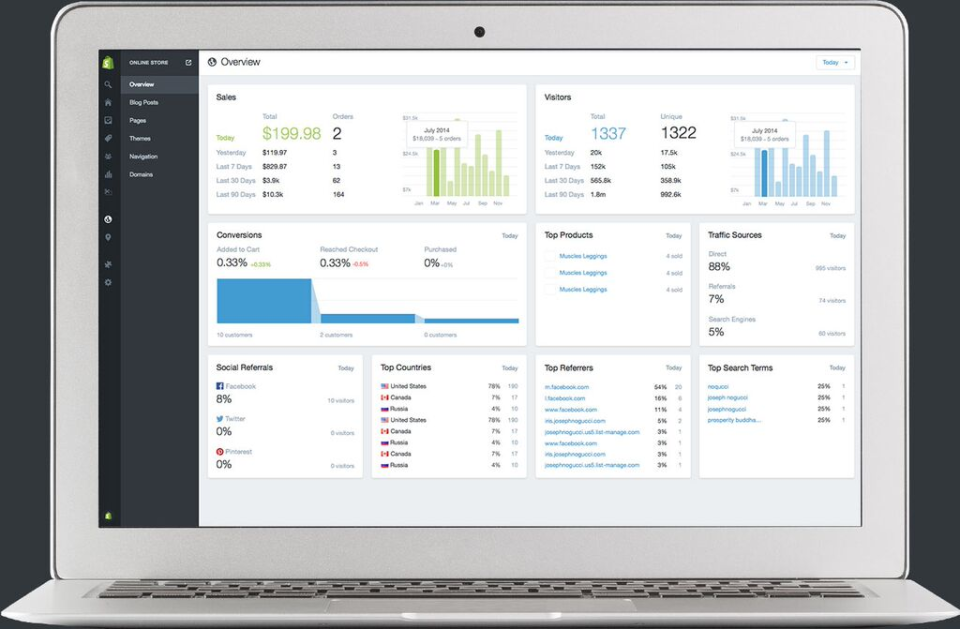 Shopify - Shopify Scoreboard
Shopify - Shopify Scoreboard 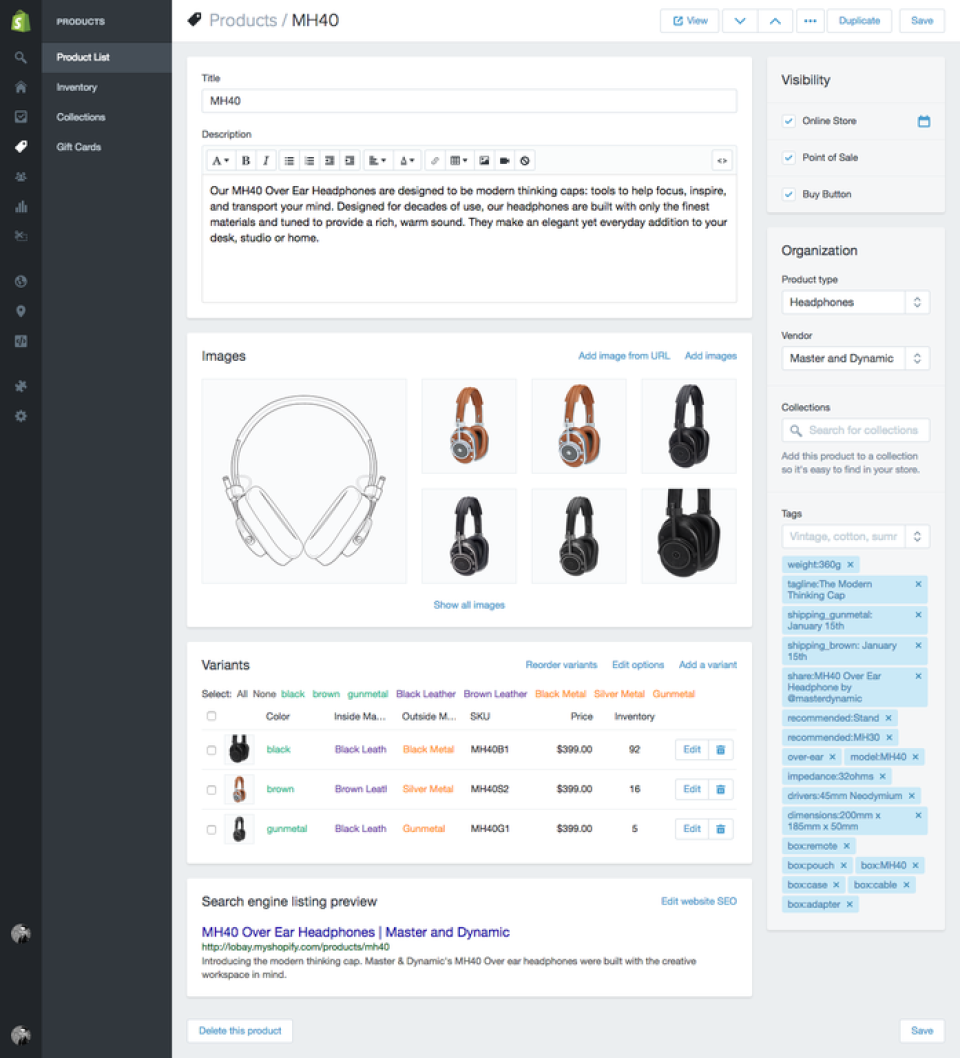 Shopify - Shopify: product description
Shopify - Shopify: product description 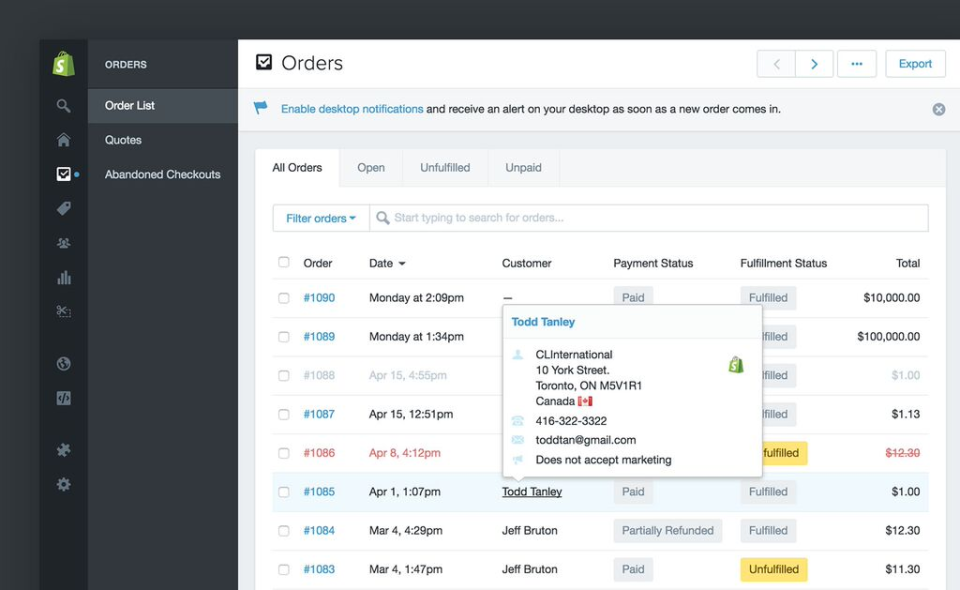 Shopify - Shopify: list of commands
Shopify - Shopify: list of commands 




Shopify: its rates
Basic Shopify
US$29.00
/month /unlimited users
Shopify
US$79.00
/month /unlimited users
Advanced Shopify
US$299.00
/month /unlimited users
Clients alternatives to Shopify

This eCommerce software is designed to streamline online sales, with features such as inventory management, order tracking and customer data analysis.
See more details See less details
With Commerce Cloud, businesses can easily manage their online store, from tracking inventory levels to fulfilling orders. The software also provides valuable insights into customer behaviour and preferences, helping businesses make data-driven decisions to enhance their online sales.
Read our analysis about Commerce CloudTo Commerce Cloud product page

Automate your marketing campaigns with cutting-edge software. Track user behaviour, segment your audience and tailor your messaging for maximum impact.
See more details See less details
With advanced analytics and easy-to-use automation tools, this software takes the guesswork out of marketing. From abandoned cart reminders to personalised product recommendations, you can create custom campaigns that resonate with your audience. Plus, with seamless integrations and a user-friendly interface, you can get up and running in no time.
Read our analysis about KlaviyoBenefits of Klaviyo
Unified B2C CRM with real-time customer profiles
Multi-channel automation: email, SMS, and push
Predictive analytics and smart segmentation
To Klaviyo product page

Advanced marketing analysis tools, providing an in-depth understanding of user behaviour.
See more details See less details
AppYuser, marketing analytics software, provides a comprehensive view of user engagement. It offers detailed analyses of the customer journey, conversion rates and behavioural trends, enabling informed decision-making to optimise marketing strategies.
Read our analysis about appYuserTo appYuser product page
Appvizer Community Reviews (0) The reviews left on Appvizer are verified by our team to ensure the authenticity of their submitters.
Write a review No reviews, be the first to submit yours.
